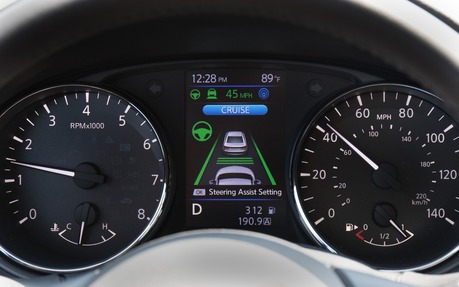IIHS Studies Reveal People are Confused About Driver Assists
Two new studies from the U.S. Insurance Institute for Highway Safety (IIHS) highlight misperceptions or gaps in people’s understanding of modern driver-assist features.
And because they lack knowledge and comprehension, drivers face new risks behind the wheel.
- Also: First Death Related to Tesla's Autopilot System
- Also: Nissan ProPILOT Assist: Following the Semi-autonomous Parade… From a Distance
Don’t Call it That
On one hand, the IIHS blames automakers for using confusing or misleading names to describe their systems, claiming that they can send the wrong messages to drivers regarding how attentive they should be.
Tesla’s Autopilot, in particular, seems to suggest that drivers can turn their eyes and their focus elsewhere. Heck, six percent of the participants in the study thought it would be okay to take a nap while using Autopilot, compared with three percent for other systems associated with semi-autonomous driving, such as Traffic Jam Assist (Audi and Acura), Super Cruise (Cadillac), Driving Assistant Plus (BMW) and ProPilot Assist (Nissan).

None of them reliably manage lane-keeping and speed control in all situations, the IIHS points out.
"Tesla's user manual says clearly that the Autopilot's steering function is a ‘hands-on feature,' but that message clearly hasn't reached everybody," IIHS President David Harkey says. "Manufacturers should consider what message the names of their systems send to people."
What Does That Mean?
Another IIHS study found that drivers don't always understand important information communicated by on-board displays, like how a system is responding to situations or when a system is temporarily inactive.
Understanding these displays is important because automated systems can behave unexpectedly and changing circumstances may require the driver to intervene.
While almost every participant was able to understand when adaptive cruise control had adjusted the vehicle speed or detected another vehicle ahead, most of them struggled to understand what was happening when the system didn't detect a vehicle ahead because it was initially beyond the range of detection. Many also had a hard time identifying when lane centering was inactive.

Some systems use visual signals and audible alerts in those situations, but the latter tend to annoy drivers more than they help them. The IIHS recommends manufacturers to make the pertinent visual signal more obvious and understandable.
Another solution would be to provide an orientation at the dealership. The study showed that interface-specific training helped drivers notice changes in lane-centering activity and use the correct icons to determine system status.
